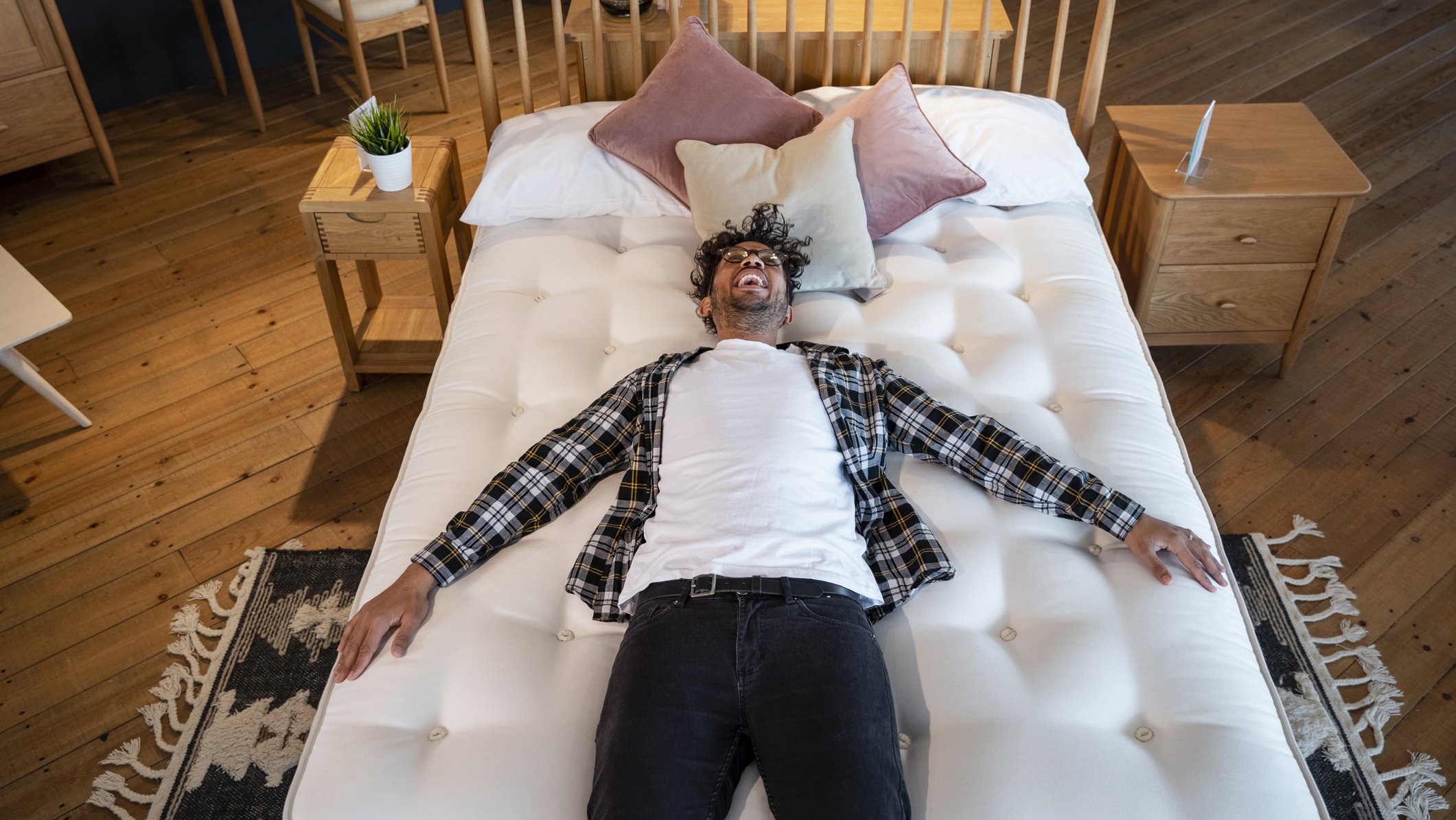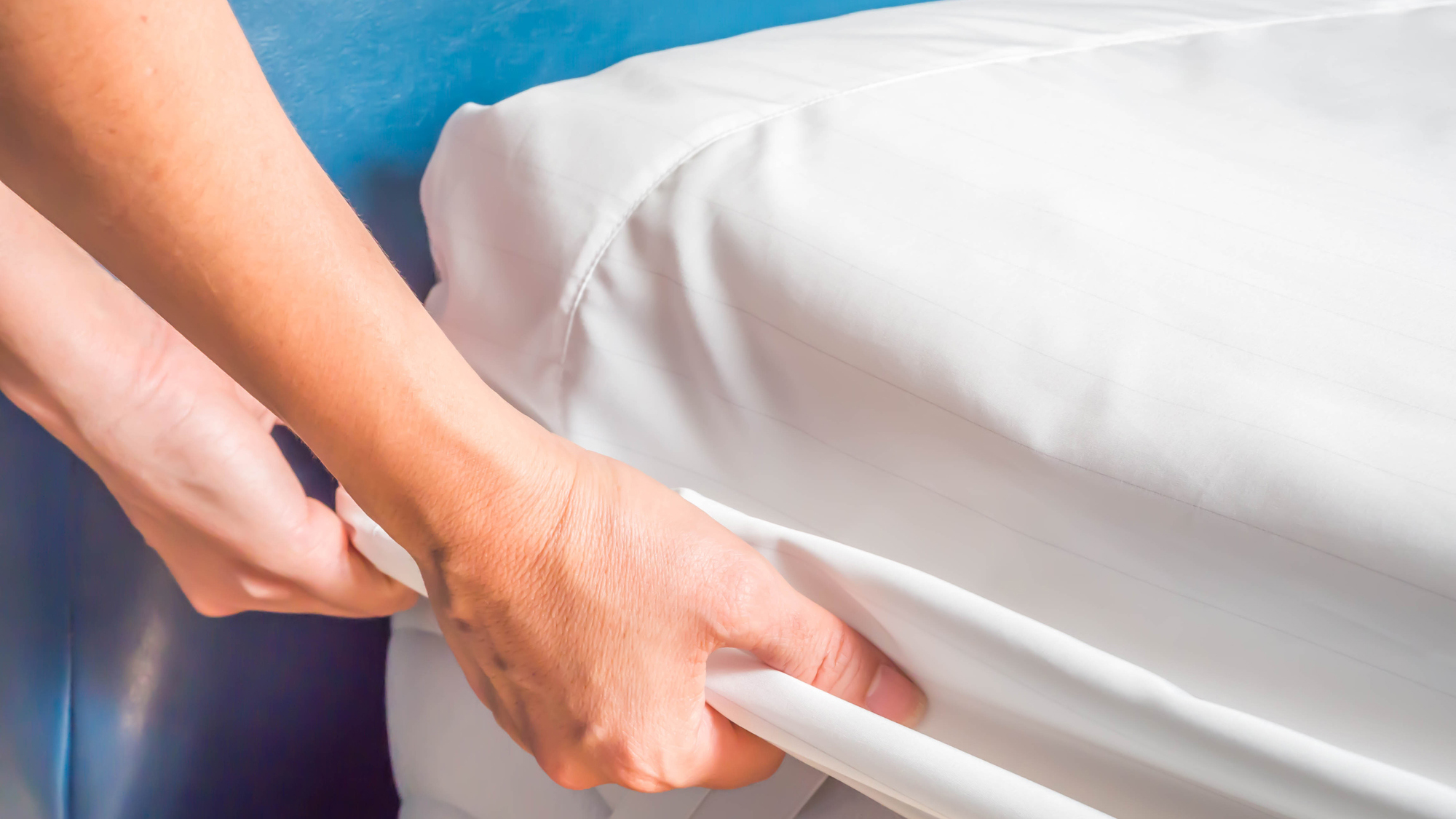Money savers: 8 ways to make your mattress last longer
Extend your mattress's lifespan and save money with our pro tips

A new mattress is an expensive but essential buy, so we want to help you get the very most out of it. And the good news is that there are a few easy ways to make it last much longer. A mattress lasts, on average, between six to eight years, although cheaper options will likely lose their support more quickly while premium options made with better materials can easily keep going for ten years or more.
To ensure that you can keep going for as long as possible until you next have to go shopping for the best mattresses, we've gathered together eight top ways to maximise your current mattress's lifespan. From keeping it clean to giving it a proper frame, these tips can help it stay comfy and supportive for much longer.
Even high-end mattresses need a bit of help to get the very best out of them, and that includes ensuring that your mattress has a decent base (not the floor) underneath it to reduce wear and tear and stay within the terms of your warranty; after all, you want to be confident that your coverage won't be affected if you need to make a claim down the line. Read on to learn more and to discover plenty more tips for giving your mattress a long and fruitful life.
1. Clean your mattress regularly
Whether you have one of the best memory foam mattresses or an innerspring or hybrid model, knowing how to clean a mattress properly is the second most effective way to help it last longer. (Scroll down to the next tip to learn what the most effective way is.)
Cleaning helps prevent the growth of bacteria, mold, mildew and dust mites, and keeps it feeling fresher through the years. Experts recommend cleaning your mattress twice a year to stay on top of all those nasties, plus general sweat, body oil and dead skin build-up.
If you spill liquid on your mattress, deal with it straight away otherwise you're sending an open invitation for bacteria and mites to snack on the spillage.

2. Always use a mattress protector
If you want the best way to make your mattress last longer and stay fresh, invest in one of the best mattress protectors. These thin, waterproof layers fit neatly around your mattress in order to protect it from spills, stains, sweat, body oils, dead skin and dust mites.
Get daily insight, inspiration and deals in your inbox
Sign up for breaking news, reviews, opinion, top tech deals, and more.
There are various kinds of mattress protector available, but for best results you should shop for a breathable option that provides your mattress with full coverage. These create a barrier against anything that could seep or burrow through to your mattress – yes, that includes bed bugs.
3. Rotate it to spread out wear and tear
Because you (and your partner) are likely lying on your mattress in pretty much the same position for hours every night, even the most well-constructed mattress is likely to dip and sag over time in the places where it's receiving the most pressure.
To prevent this and help keep the surface even, you'll need to rotate your mattress every three months to spread out natural wear and tear. That way, you won't have to learn how to fix a sagging mattress.
Most but not all mattresses can be rotated, and fewer still can be flipped. Unsure whether yours is suitable for rotating or flipping? We run you through it in our feature answering how often should you rotate or flip a mattress, as each manufacturer has its own guidelines.
4. Add a mattress topper
If your mattress is starting to show its age, one of the best mattress toppers can help to extend its life for another year or two. Bed toppers vary in price and height, but most are designed to fit neatly on top of your mattress via straps or non-slip bottoms.
Toppers can be used to add more comfort – such as extra cooling, firmness or plushness – to keep your bed comfortable and supportive for longer, saving you money because it's still good for your body and sleep. They're especially handy at increasing the comfort of a cheap mattress. And if you're not sure whether you should get a mattress topper or a mattress pad, our mattress pad vs mattress topper guide will explain the difference.
The only exception is if your mattress has deep sagging that can't be offset. But if your mattress is in good condition, a topper will extend its lifespan. We explain this more in our feature answering how long does a memory foam mattress last.

5. Place your mattress on a proper bed frame
While some people put their mattresses on the floor for extra-firm support, this isn't always the best idea; if you have allergies you'll be closer to allergens and dust that settle on the ground, and your mattress won't receive any airflow underneath.
It's better both for your mattress and for you if you give your mattress a proper bed frame, platform or base; it'll reduce wear and tear on your mattress, support your body weight better and keep it at a height that makes it easier for you to get in and out of bed comfortably.
A suitable frame can also help prevent your mattress (particularly memory foam options) from sagging, which can cause back pain. And if you choose a bed frame with spaced slats, your mattress will not only get the right amount of support, it'll also be kept cooler and fresher underneath.
6. Air it outside to keep dust mites under control
Dust mites can live for up to 90 days in mattresses and bedding, so it’s essential to regularly air and clean your bed. Dust mites feed on skin and then shed droppings that can aggravate allergies and, in turn, disrupt sleep.
One effective way to kill dust mites is to expose them to direct sunlight; while it's easy to take pillows and duvets outside to do this, mattresses are obviously quite a lot heavier and more unwieldy so this might not be practical. However by stripping off your sheets and moving your mattress close to a window for three or four hours, you can achieve similar results.
7. Don’t use it as a trampoline
We get it. Kids and pets love jumping on beds, but if this happens too often it will accelerate the wear and tear on your mattress, breaking springs on hybrid and innerspring mattresses, and weakening edge support so you slide off the bed.
Jumping also causes the surface of the mattress to become uneven, not to mention it will damage the bedframe, meaning less support for your mattress. Plus, then you'll be in need of not only a new mattress but a new frame too.

8. Check your mattress warranty
Most brands warrant your mattress against manufacturing defects. Some warranties also take sagging into consideration, but if the dip is shallow then it won't be covered. In general, accidental damage, spillages and discolouration from sweat are not included. Neither is standard wear and tear.
If your mattress has a lifetime warranty and you're the original buyer, the mattress will be covered for the time you own it. The terms will vary, but manufacturing defects are covered for extended periods under lifetime warranties, after which the brand will repair, re-cover or replace the mattress for free if needed.
How to make your mattress last longer: Summary
The best way to ensure that your mattress lasts as long as possible is to take a preventative approach: look after it from day one and it should give you many years of service. And even an older mattress can be looked after to help it last a little longer, so don't write your aged mattress off if it's just a few years old.
Regular cleaning, rotating and keeping it safe from stains, spills and bacteria will extend its lifespan so you can save your money. But if you've decided that you do need a new mattress, we've included some of our top picks below. This includes the Saatva Classic, a stunning innerspring hybrid that comes in three firmness levels. Our Saatva Classic mattress review contains all our testing notes on that model.
To improve your sleep comfort further, also take a look at our best pillows guide as pillows should be replaced every year or two for hygienic, supportive sleep.
Grace Franks is an experienced sleep and mattress writer who has written for our sister sites Tom's Guide and T3, among other brands. She's interested in organic and eco-friendly sleep products, and how good sleep can improve our general wellbeing. When not writing about mattresses, Grace loves reading, creative writing, and practicing yoga.
